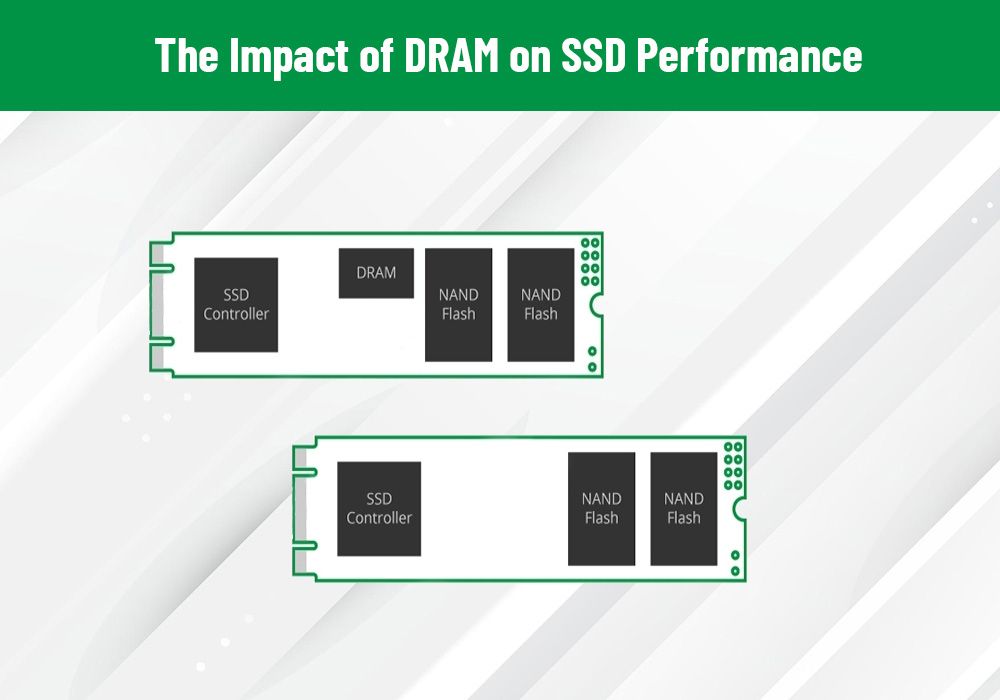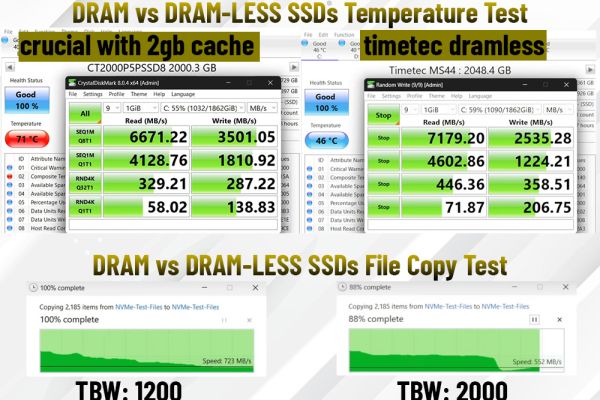
The Impact of DRAM on SSD Performance
Solid State Drives (SSDs) have become increasingly popular in recent years due to their fast performance and reliability compared to traditional Hard Disk Drives (HDDs). However, there is an ongoing debate about the impact of DRAM (Dynamic Random Access Memory) on SSD performance. Some argue that the presence of DRAM significantly improves SSD performance, while others claim that it has little to no effect.
DRAM is commonly used in SSDs as a cache to store frequently accessed data and improve overall system performance. When an SSD has a DRAM cache, it can quickly access data, resulting in faster read and write speeds. The presence of DRAM also helps to reduce the number of write operations to the NAND flash memory, prolonging the lifespan of the SSD.
DRAM vs. DRAM-less SSDs
There are two main types of SSDs: those with DRAM caches and DRAM-less SSDs. DRAM-less SSDs rely on the SSD controller to manage data access and do not have a dedicated DRAM cache. As a result, they may experience slower performance, especially when dealing with large files or heavy workloads. On the other hand, SSDs with DRAM caches can handle these tasks more efficiently, resulting in better overall performance.
Does DRAM Really Matter?
The impact of DRAM on SSD performance has been a point of contention among industry experts and consumers. Some argue that the presence of DRAM significantly improves SSD performance, especially in terms of random read and write speeds. Others claim that the difference in performance between SSDs with and without DRAM is negligible in real-world scenarios.
Real-World Performance Tests

Numerous benchmark tests and real-world performance tests have been conducted to determine the impact of DRAM on SSD performance. In many cases, SSDs with DRAM caches have demonstrated faster read and write speeds, especially when dealing with large files and multitasking. However, the difference in performance may not be noticeable during everyday use, such as web browsing or light productivity tasks.
While the presence of DRAM in SSDs can undoubtedly improve performance in certain scenarios, its impact may not be as significant in everyday use. When choosing an SSD, it's essential to consider your specific needs and usage patterns. If you frequently work with large files, run multiple applications simultaneously, or engage in heavy multitasking, an SSD with a DRAM cache may offer a noticeable performance boost. However, for general use, the difference in performance between SSDs with and without DRAM may not be worth the extra cost. Ultimately, the importance of DRAM in SSD performance depends on individual requirements and priorities.